Sonozilla at the Dundee International Design Festival - Vipin Seetohul
Published: 8 December 2016
Dundee became the first UNESCO City of Design in the UK in November 2014, a prestigious award that recognises the huge contribution the city has made to design worldwide. It was chosen along with Helsinki (Finland), Bilbao (Spain), Curitaba (Brazil), and Turin (Italy).
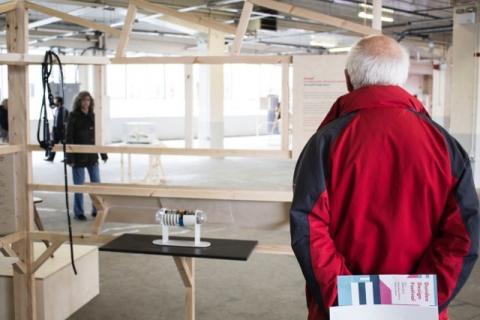
Dundee became the first UNESCO City of Design in the UK in November 2014, a prestigious award that recognises the huge contribution the city has made to design worldwide. It was chosen along with Helsinki (Finland), Bilbao (Spain), Curitaba (Brazil), and Turin (Italy).
To mark this important milestone, a former print works (West Ward Works) had been transformed into a temporary venue for four stimulating days (25 – 28 May 2016) of design-focused exhibitions, talks, demonstrations and workshops from Dundee, Scotland and internationally. The vast space was open to the public for the first time. The festival theme, ‘Place. Work. Folk. Design’ focused on design for health and wellbeing and explored the potential of design to connect communities and improve everyday lives.
With such a calibre of an event, it was only natural for the Sonopill programme to be approached for a spot in the limelight of the International Design Festival. After all the Sonopill programme saw its beginnings in Dundee, specifically within the walls of Ninewells Hospital, led by Prof. Sandy Cochran and his co-investigators from Dundee, Glasgow and Heriot-Watt universities.
This public engagement idea was the initiative of Dr. Rod Mountain, an ENT Surgeon based at Ninewells Hospital in Dundee. Together with Mr. Siôn Parkinson, the Design Festival Producer, Rod brought on board Mr. Lewis Hall, a DJCAD student / product designer and Ms. Annie Campbell, a professional illustrator, who would both work with me to create the Sonozilla, a (x10) mock-up of the Sonopill.
This proved to be a rather valuable exercise overall. Not only was the expanded mock-up useful as an educational tool to engage the general public, but it was an excellent way to get the Sonopill team talking, communicating dimensional aspects of their individual research work that would further down the line be incorporated within the Sonopill capsule. You can only imagine what a challenge packaging various technology within a space measuring only 30 mm by 10 mm diameter can be; this includes various diagnostic modalities and their respective electronics. This is where Sonozilla highlighted the dimensions of individual components and their position within the capsule, without the need of a magnifying glass.
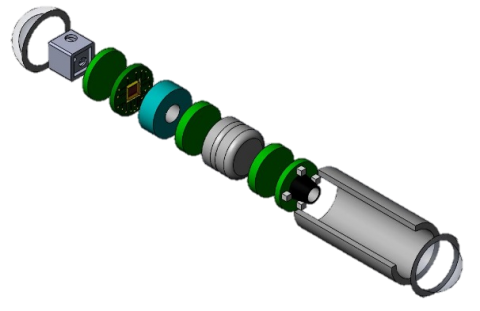
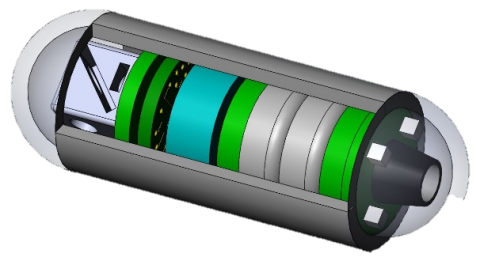
Sonozilla started taking shape with a CAD drawing I made in SolidWorks (shown above), after gathering dimensional details from my team members. Most of the parts were then 3D-printed using a Stratasys uPrint SE 3D printer. The next steps were handled by Lewis and involved Sonozilla assembly and aesthetics. Here are some ‘behind the scenes’ shots of the evolution of Sonozilla, from design to concept:
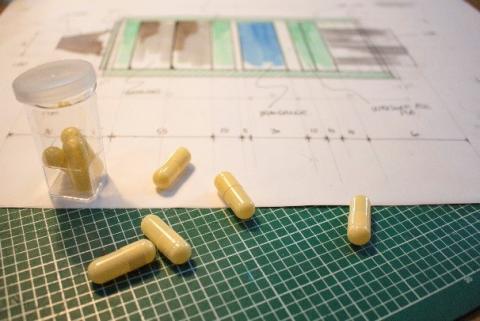
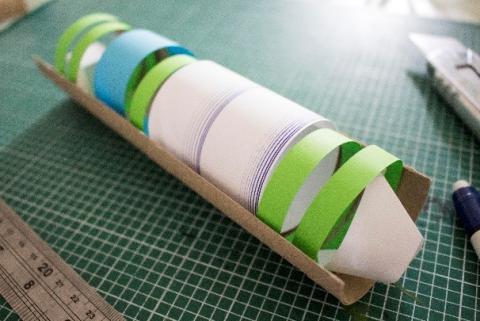
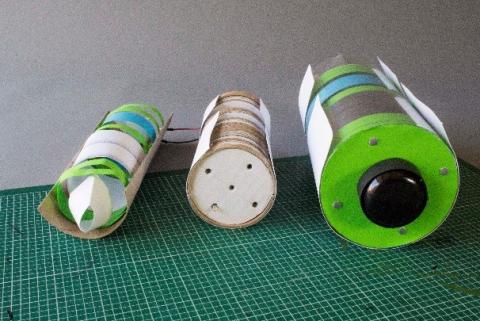
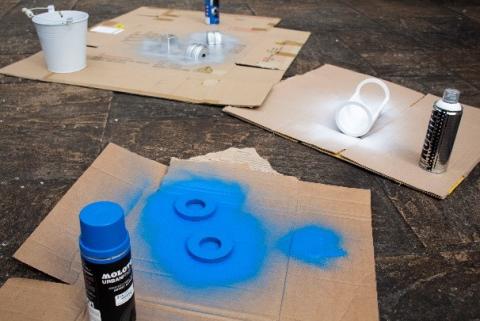
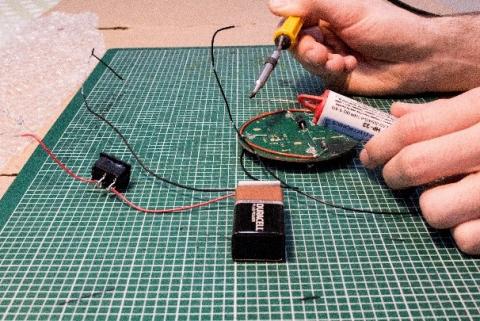
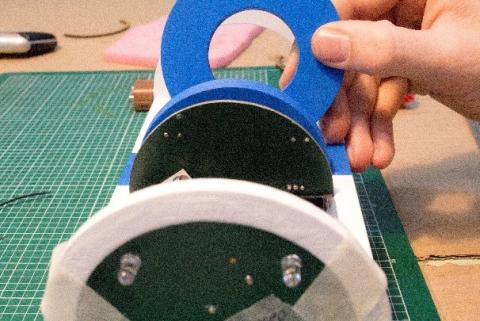
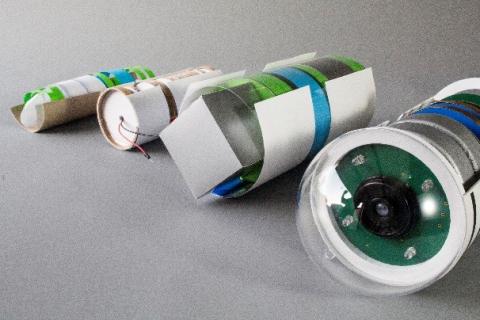
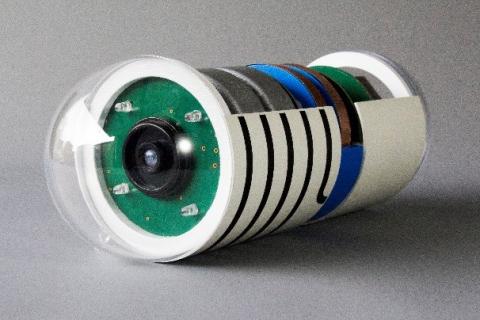
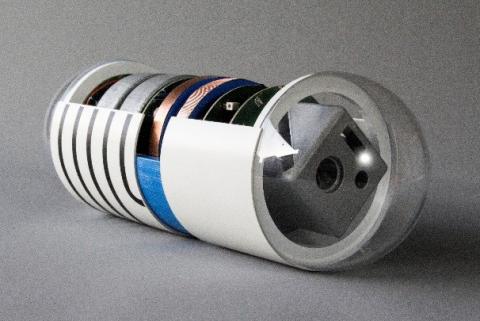
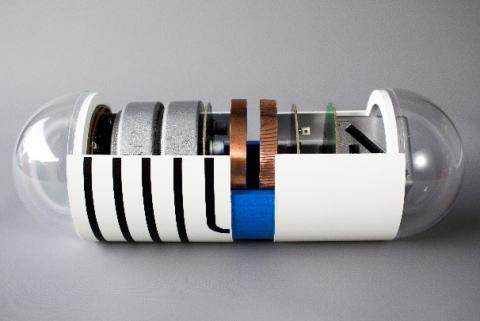
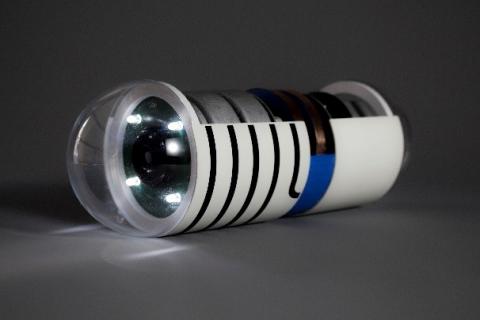
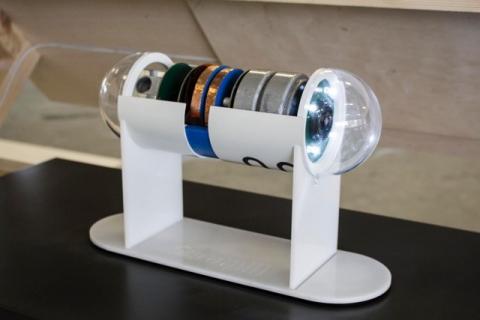
In addition to the Sonozilla, in consultation with Dr. Ben Cox, the Clinical Research Fellow on the Sonopill programme, Ms. Annie Campbell produced a poster depicting the endoscopic design history:
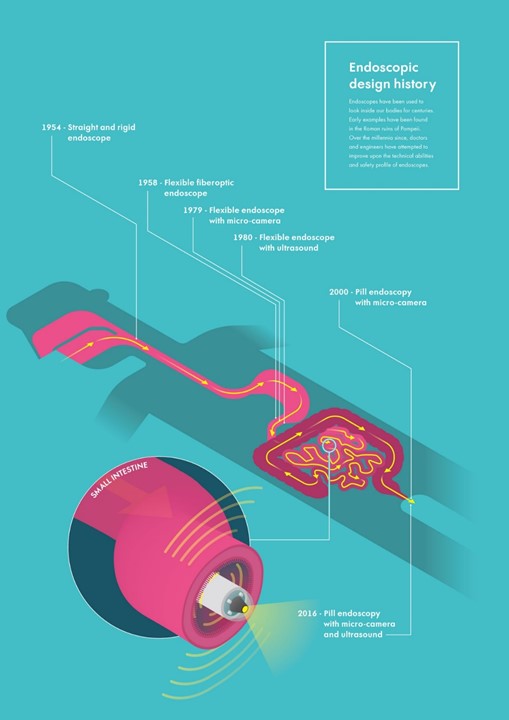
To conclude, it has been a real pleasure working on this public engagement project. This work has been highly beneficial not just to the community, but also as an integral tool for the Sonopill programme. I look forward to being involved in such initiatives in the future.
I’d like to thank all the team members on the Sonopill programme for their valued input; Siôn Parkinson for giving us such an opportunity (http://www.dundeedesignfestival.com/); Lewis Hall for the excellent end product (http://socialdigital.dundee.ac.uk/~lxhall/blog/); Annie Campbell for creating the poster (http://www.campbellmedicalillustration.com/#home); and finally, Rod Mountain for his enthusiasm in driving this Public Engagement project forward.
I’ll leave you with a final photo of Siôn explaining endoscopy to two very curious kids – this nicely portrays the purpose of such initiatives: to educate the general public and engage the future scientists of tomorrow.
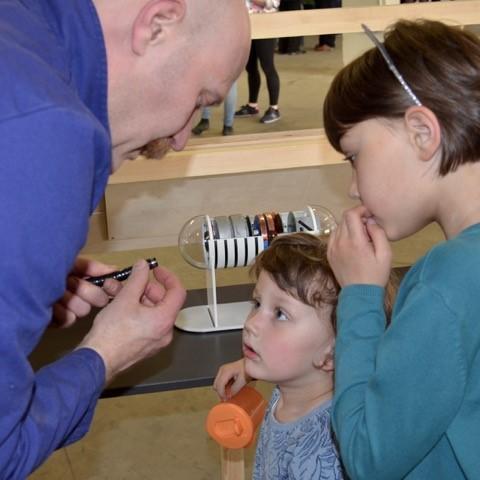
First published: 8 December 2016
<< Blog

